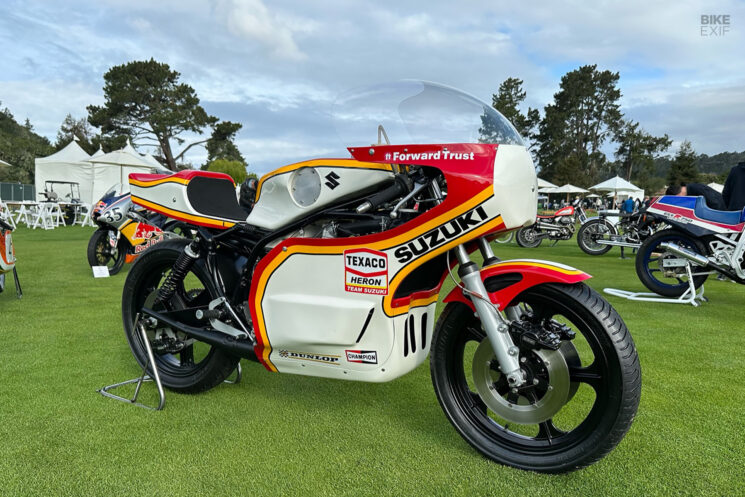
I’m not much of a golfer, so the beauty of the Quail Lodge and Golf Club is largely lost on me. But you’d be surprised how quickly you can spruce a joint up by splashing a bit of used motor oil about, and wafting some unburned 110 octane around. Classing up the greens one day a year, The Quail Motorcycle Gathering in Carmel, California, is reason enough to dust off your flat cap and blazer.
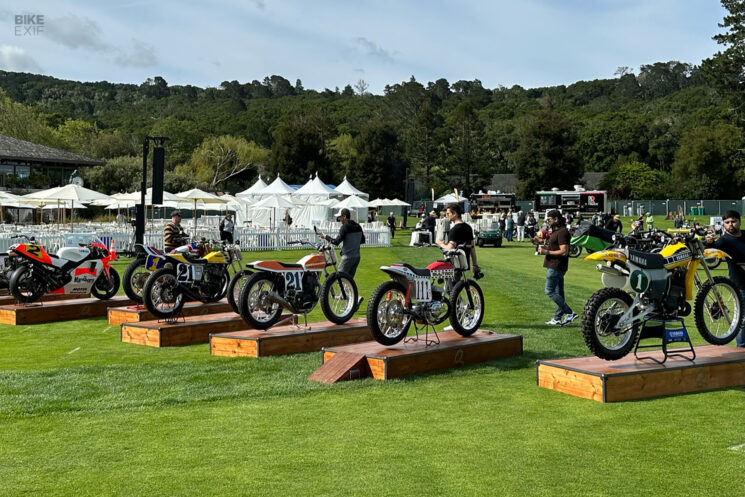
Since 2009, The Quail Motorcycle Gathering has become one of the most popular events for high rollers and dreamers alike, attracting several thousand spectators a year. Mirroring the automotive world, these prestigious golf course events aren’t the cheapest to get into, but the caliber and variety of the vehicles on display is usually worth the price of admission.
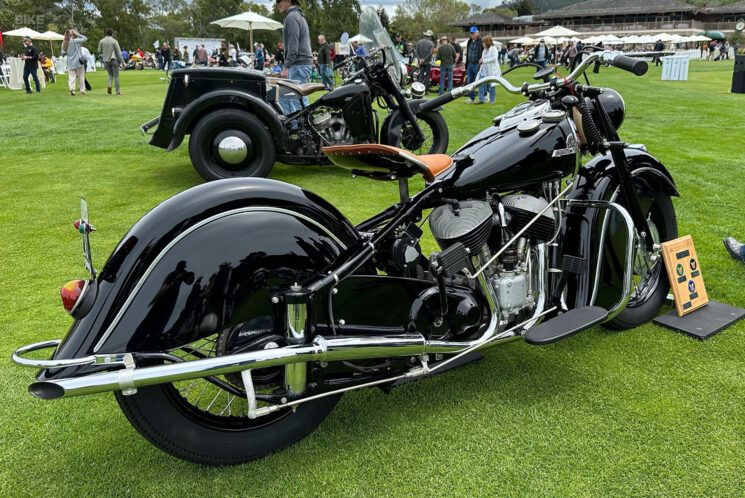
The Quail was pared down to around 200 motorcycles this year, presumably so you could get through the whole lot in a day. All the traditional classes were represented, but they throw some fun ones in the mix as well, such as the Choppers Award, Bring on the Baggers and the Extraordinary Bicycles and Scooters Award.
If you were too busy wrenching on your not-so-rare scooter in your not-so-pristine garage, here’s a quick rundown of some of our favorites from the event.

1939 Miller-Balsamo 200 Carenata You can’t argue with Best of Show, and this year’s title went to John Goldman’s 1939 Miller-Balsamo 200 Carenata. With enough art deco influence to make an Indian Chief look like a Honda Rebel, the 200 Carenata is an especially spectacular machine from Italy’s golden era of motorcycles.

The brand that would become Miller-Balsamo was started by brothers Ernesto, Edgardo and Mario Balsamo in Milan back in the early 1920s. Previous sales reps for Ariel and Excelsior, they had a vision of building motorcycles that were fast and stylish, and the effort is certainly evident in the 200 Carenata.
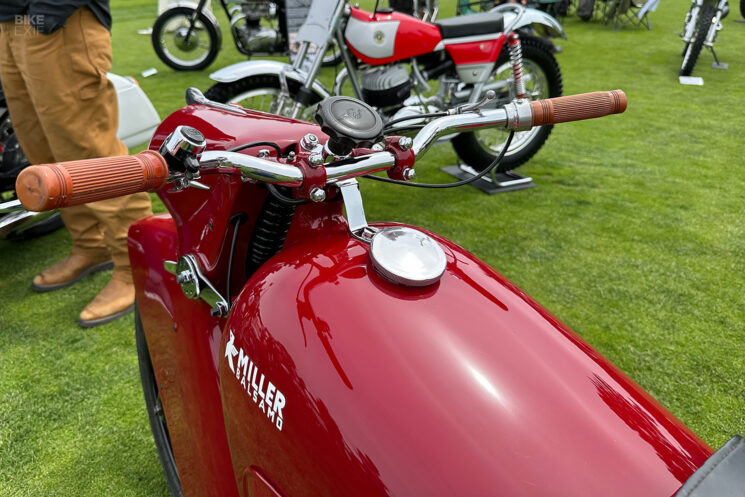
Miller-Balsamo built some pretty trick bikes for the day, and snatched up some records in the late ’20s, but the brand never returned to full strength after WWII. Despite the savvy design and beautiful enclosed bodywork of the 200 Carenata, sales of the 196 cc two-stroke fell short of expectations, and the brand is better known for coining the name ‘Vespa’ these days.
A marvel of craftsmanship that exemplifies what could have been, Goldman’s Miller-Balsamo 200 Carenata is incredibly rare, and a worthy and exciting choice for Best of Show.
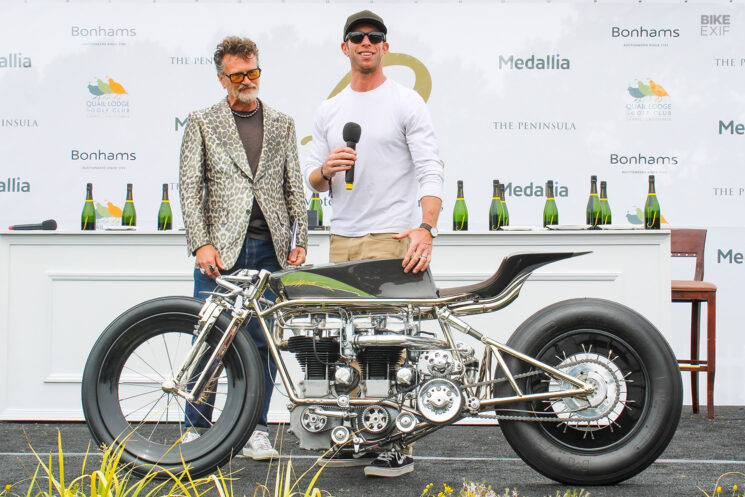
Hazan Special Velocette Custom Exif readers will instantly recognize this stunning twin-Velocette powered custom by Max Hazan, and owner Marco Diaz walked away from the Quail with a 1st place in the Custom/Modified class.
This one deserves its own category, I’d call it the ‘Pick Your Jaw up off the Floor Award?’ It’s a working title, but either way, Hazan’s handcrafted custom is simply in a league of its own. While it looks more like a living room centerpiece, this one runs and rides, despite being a literal pain in the ass according to Hazan.

The whole project started when a pair of 349 cc Velocette MAC engines came up on eBay, and Hazan immediately envisioned mating them together in a chassis. If that wasn’t enough, the engines are actually stressed members in the handbuilt chromoly frame, and the whole setup runs belts on custom-machined pulleys through a Matchless four-speed that’s been tipped on its side.
Okay, but anyone with a flux core and a crescent could do that, so Hazan added a supercharger to the mix. The polished Eaton TVS R410 is actually driven off the final belt in the system, which is double sided, sending power to the transmission and the supercharger. And don’t think for a second that it’s for show only, as Hazan has the blow-through system set to 6 psi! [More]
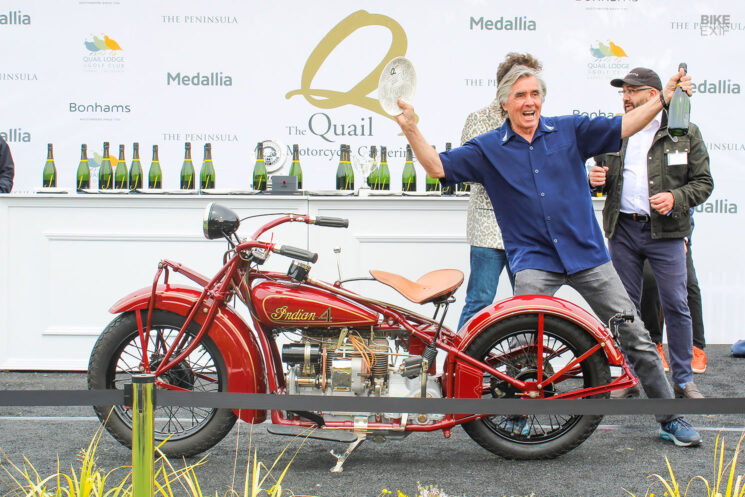
1929 Indian 402 ‘Rare means no one wanted one when they were new,” the old guys quip, and when it comes to Indian Fours, that statement has some truth in it. Despite a production run that ran from 1928 to 1942, Indian didn’t sell very many Fours, and the model’s lack of success hurt the brand as a whole.
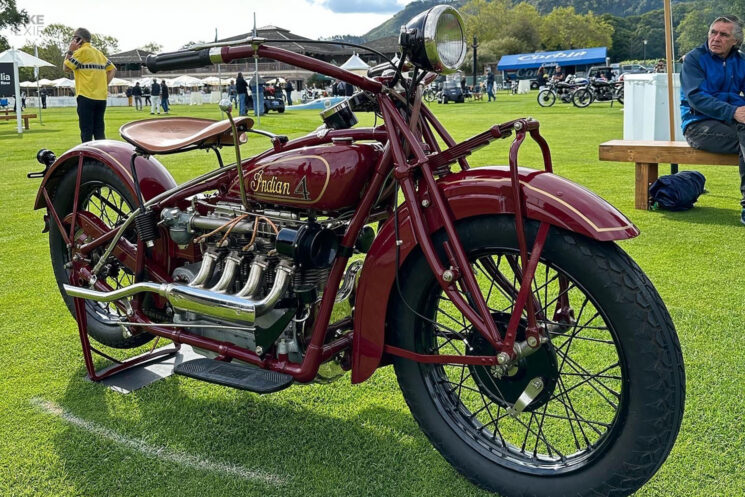
But with the passage of nearly 100 years, Indian Fours have become a technical spectacle for the eyes. There’s just something different about an air-cooled four-cylinder running lengthwise under the saddle that makes the Four interesting. While they didn’t receive the Chief’s deco-inspired bodywork, these bikes are among the most valuable in the world, commanding prices above $200,000 in some cases.
Mike Lynch’s 1929 Indian 402 is a stunning example of the model, with its leaf-spring front end, gold pinstriped bodywork and sprung tan saddle. Looking ’29 showroom fresh, Lynch’s Indian was Bonham’s choice for Antique 1st Place.
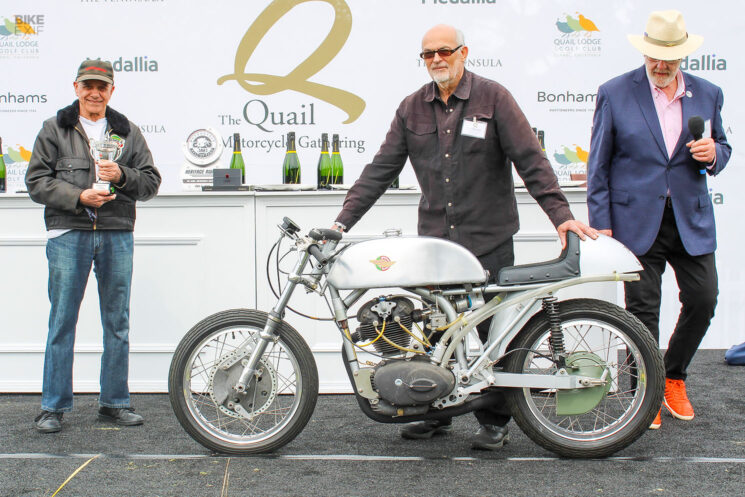
1961 Ducati 350 Racer Ducati didn’t make a 350 in 1961, and in fact, the first Ducati 350 racer left the factory as a 200 cc bike. Frank Scurria was racing his 200 cc Ducati in the 250 class back in the early 1960s, and even though the bike was a screamer, he was tired of giving up so much displacement to the competition.
Modified with a stroker crank and an aluminum spacer under the cylinder, Scurria’s Ducati was now a square 247 cc, and he won the AFM 250 cc Championship in 1961 with this engine. But Scurria knew his little Ducati had more to give, and with a borrowed piston and cylinder, he pushed the engine to 254 cc, and raced it in the 350 cc class.
With a second place finish behind an AJS 7R, Scurria’s Ducati was lethal in both the 250 and 350 cc class, but things got even better in 1962. Ducati had unveiled a new over-square 250, and with Scurria’s mods, a square 344 cc engine could be built. Maximizing every aspect of the new engine, Scurria’s 350 was the fastest Ducati he ever raced, and netted him a third place finish in the 350 cc Championship for 1963.
Realizing the value in Scurria’s creation, the Ducati factory requested his technical drawings for a production 350, which were used to develop the 1965 Sebring 350. Even though the factory wouldn’t heed his advice to start with fresh castings, and build the 350 over-square, the Ducati 350 engine owes its existence to a young racer’s stroker crank and aluminum shim.
Frank Scurria accepted the Hagerty HVA Historical Preservation Award for his 1961 Ducati, which he restored after being reunited with his original chassis in the early 2000s.

1972 Moto Guzzi Eldorado But what about the baggers? We wouldn’t leave you hanging on that one. While you’re likely picturing something with apes, tassels and a bit more chrome, MotoAmerica’s Bring on the Baggers award went to a 1972 Moto Guzzi Eldorado, outfitted for police duty with the California Highway Patrol.
There was much to gain financially from building a suitable patrol bike, and Moto Guzzi understood the assignment. Building on the strengths of the rock-solid Ambassador, Moto Guzzi added another 100 cc to their venerable air-cooled V-twin to better suit American highways. The torquey engine was mounted low and forward for stability, and auxiliary systems like oiling and electrical were hopped up for long hard miles.
Considered a workhorse, and suitable for long haul riding, the Eldorado sold well to civilians and highway patrol departments, with the majority imported into the States. Still sporting its radio, siren, bags, cherries and berries, Daniel Crowley’s 1972 Moto Guzzi took home the award in the brand new bagger class.
The Quail Motorcycle Gathering | Via Kahn Media
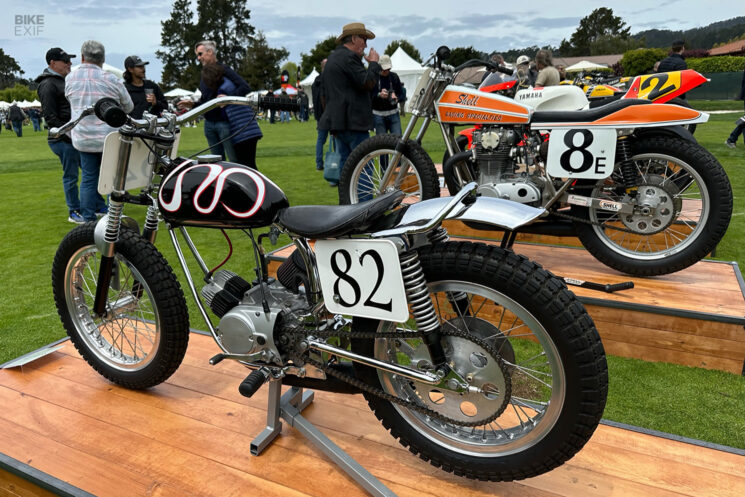
from Bike EXIF https://ift.tt/WVqFn9f
No comments:
Post a Comment